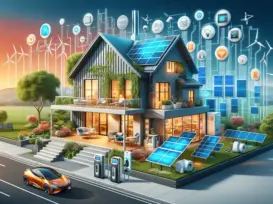Grus Home Energy - Heat Pumps Optimization
Maximizing Efficiency in Heat Pump Systems: Strategies for Optimal Performance
Maximizing Efficiency in Heat Pump Systems: Strategies for Optimal Performance
As the world becomes increasingly energy-conscious, the importance of optimizing heat pump systems cannot be overstated. Heat pumps serve as a cornerstone for both residential and commercial heating and cooling solutions, offering a more sustainable alternative to traditional furnace and air conditioning systems. They function by transferring heat from one place to another, either heating or cooling a space depending on the need. However, to ensure that these systems operate at peak efficiency, several strategies must be employed.
Firstly, the optimization of a heat pump system begins with correct sizing and installation. An oversized or undersized unit can lead to inefficient operation and reduced lifespan. A professional assessment of the space’s heating and cooling needs can determine the appropriate size of the heat pump, thus ensuring that the system runs efficiently and effectively.
Once an appropriately sized heat pump is installed, regular maintenance becomes critical. This can involve cleaning or replacing filters, inspecting ducts for leaks, and checking the refrigerant levels. Neglecting maintenance can lead to reduced airflow, higher energy consumption, and system strain. Seasonal checks, ideally before the onset of extreme weather conditions, can help maintain optimal performance.
Another key factor in heat pump optimization is the integration of smart thermostats and controls. These devices allow for greater control over the heating and cooling cycles, adapting to the specific needs of the space and the habits of its occupants. Smart thermostats can learn patterns and adjust settings to maximize efficiency, for example, by reducing heating or cooling when the space is unoccupied.
The use of advanced compressor technology such as inverter-driven compressors, which adjust their speed to match the heating or cooling demand, also contributes to heat pump optimization. This technology enables the heat pump to operate at varying capacities, which is more energy-efficient than simply turning on and off at full power.
In addition to these technical approaches, the orientation and insulation of the building play a crucial role. Proper insulation helps to maintain the desired temperature with minimal energy waste, while strategically placed windows can take advantage of natural heat from the sun during colder months, reducing the load on the heat pump.
Heat pump optimization also extends to the choice of refrigerant. As environmental concerns grow, selecting a refrigerant with a low global warming potential (GWP) and ensuring that it does not leak can make a significant difference in both the system’s efficiency and its environmental impact.
Furthermore, the integration of renewable energy sources such as solar panels can lead to a significant boost in the efficiency of heat pump systems. By utilizing clean energy to power the heat pump, one can reduce reliance on the grid and the carbon footprint of the heating and cooling system.
Finally, ongoing monitoring and data analysis are invaluable for fine-tuning system performance. By tracking energy use and identifying patterns, adjustments can be made to the heat pump system to improve efficiency and reduce costs. Modern heat pumps often come with connectivity features that facilitate such monitoring, making it easier for homeowners or facility managers to optimize their systems.
In conclusion, optimizing heat pump systems is a multifaceted endeavor that involves careful planning, regular maintenance, and the integration of smart technology. By taking a holistic approach to heat pump optimization, it is possible to achieve significant energy savings, reduce environmental impact, and enhance the comfort of living and working spaces.
Blog, Smart Home Automation , February 17, 2024 , Electric Vehicle (EV) Charging, Energy Consumption Analysis, Energy Management, Energy Savings and Profit, Heat Pumps Optimization, Home Battery Storage, Renewable Energy Technologies, Smart Grid Technology, Smart Metering, Smart Metering Systems, Solar Panels Efficiency, Sustainability in Home Energy
©2025 All Rights Reserved. Grus IoT Co.,Ltd.
